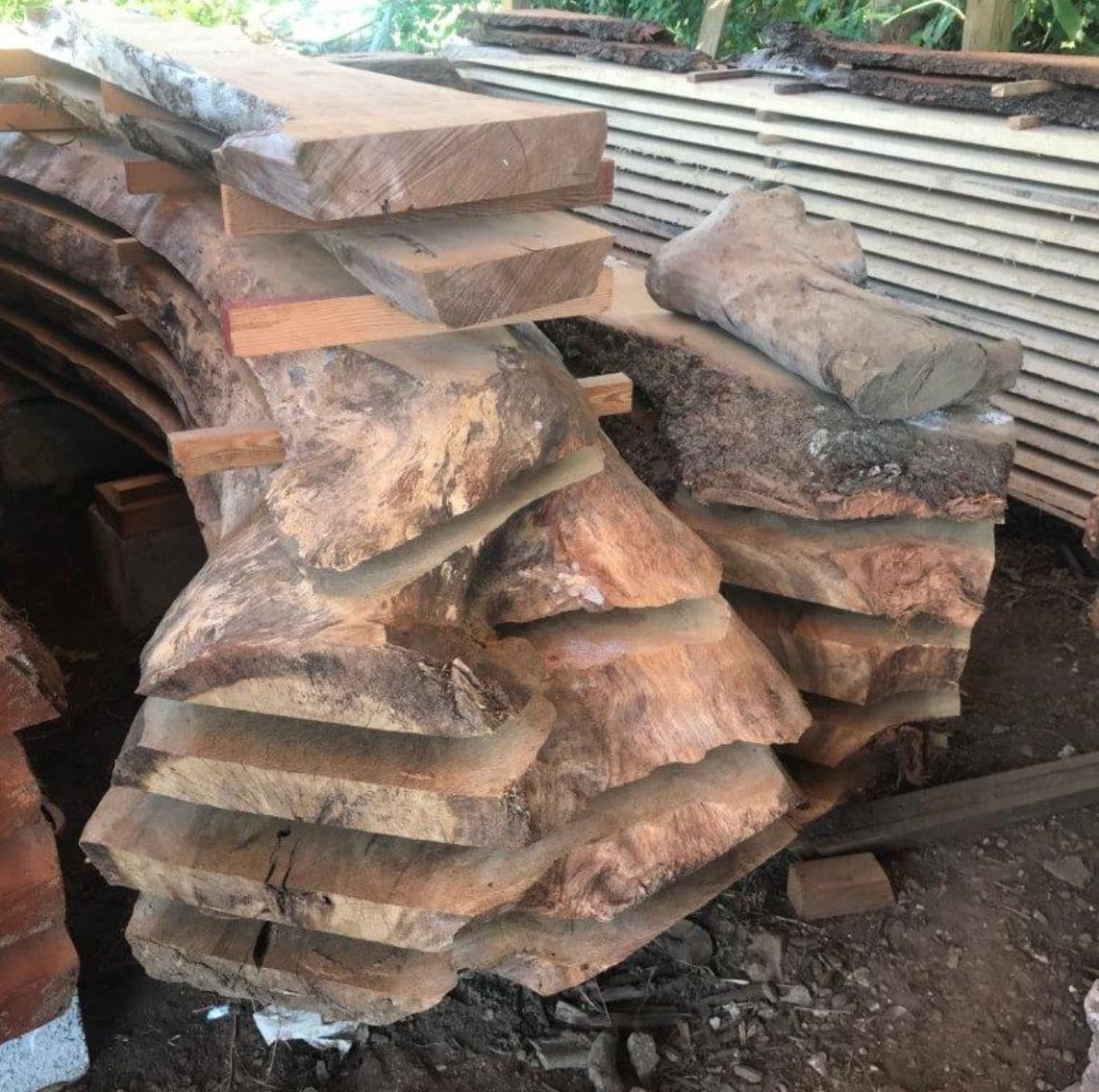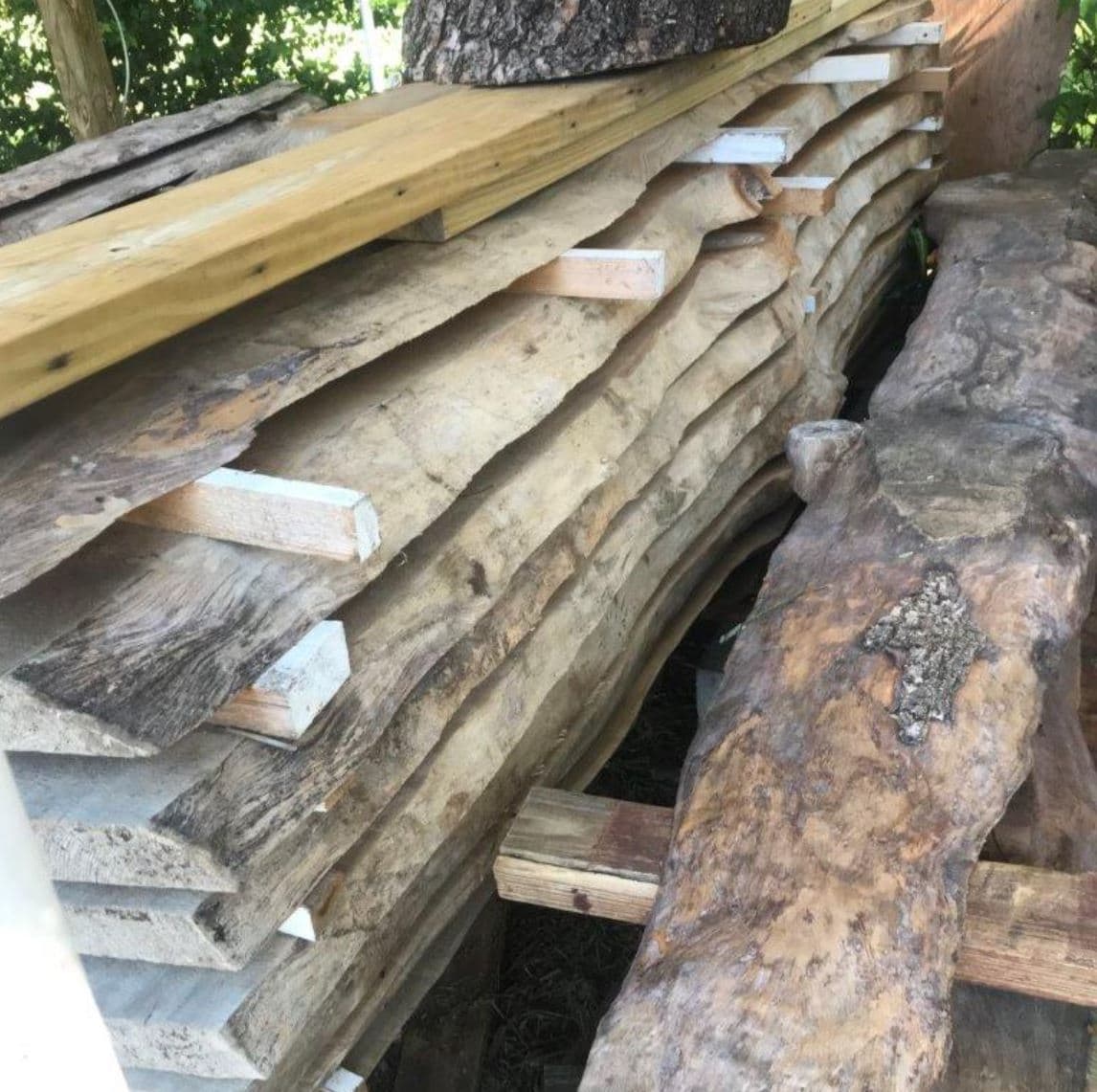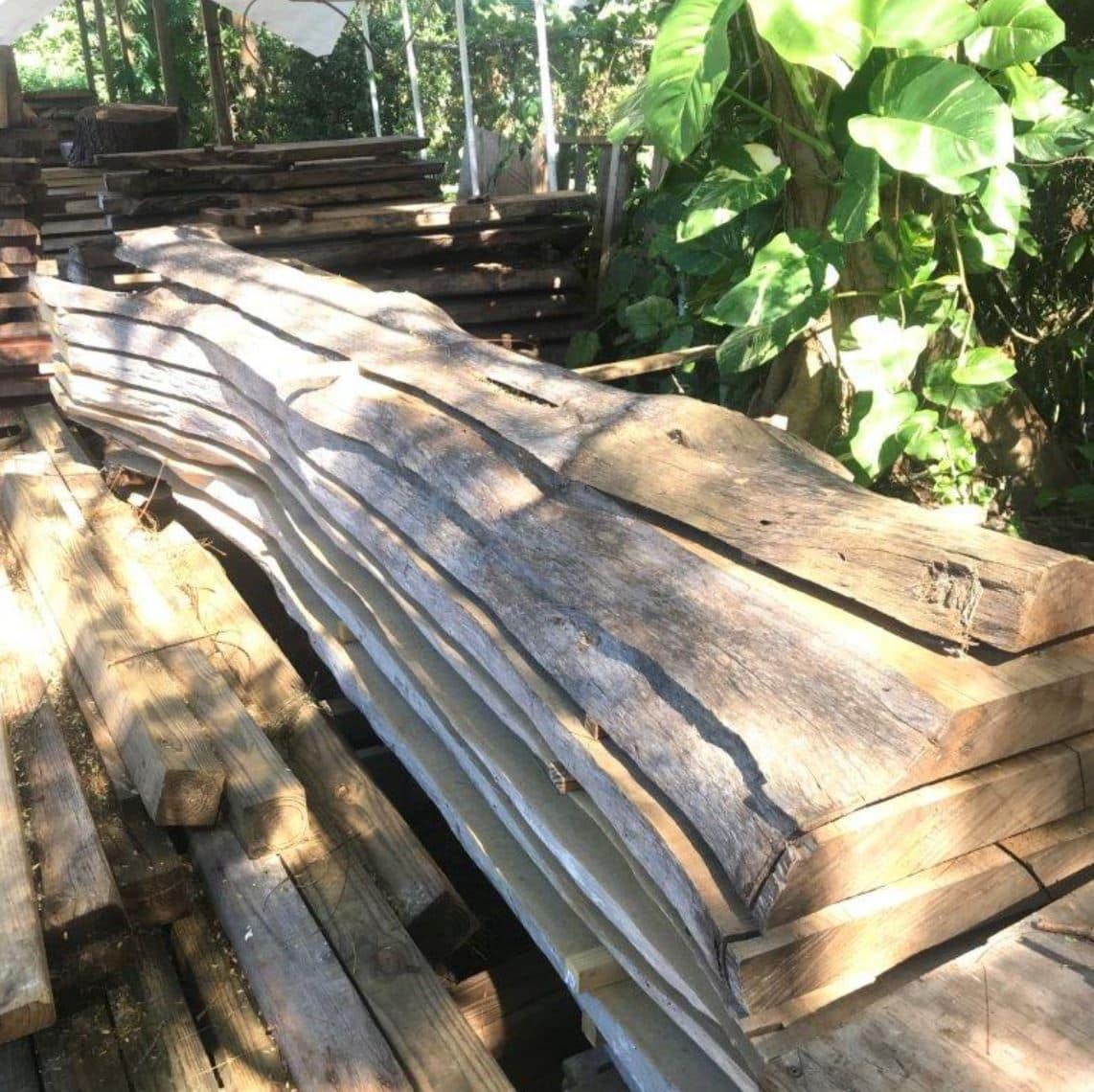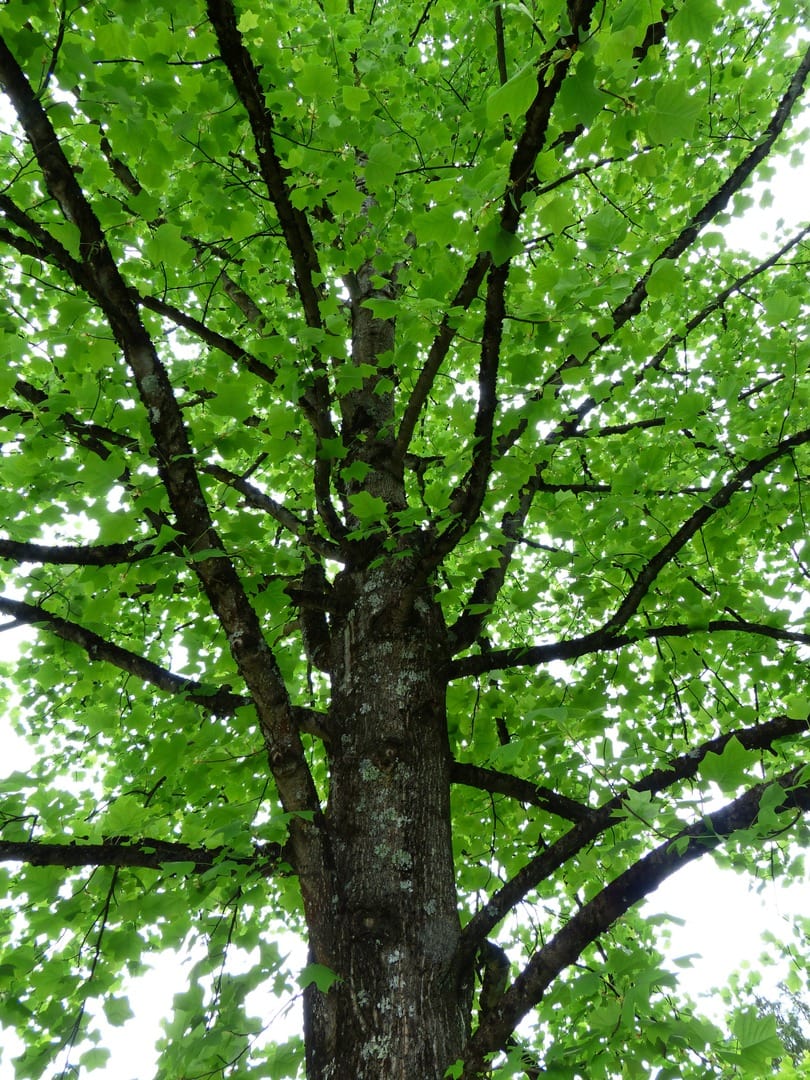- Best STIHL Brush Cutter Replacement Blade - December 8, 2023
- Box Elder Wood Uses - September 30, 2022
- Hackberry Wood Uses - September 25, 2022
There are three types of Magnolia that provide timber for woodworkers. They all share common characteristics that make generalizations of Magnolia wood uses possible.
The most appreciated quality of the three Magnolia timbers is the straight grain which makes it easy to use with both hand and power tools.
The three species are:
- Magnolia acuminata Cucumber Tree, sometimes called Mountain Magnolia.
- Magnolia virginiana Sweetbay
- Magnolia grandiflora Southern Magnolia
My introduction to woodworking was through a teacher whose hands bore the signs of a lifetime of handling timber. His favorite pearl of advice was, ‘When you want a wood that you can rely on to stay straight, take a piece of Magnolia. You can trust that timber.’
That was many years ago, and still, whenever I hold a piece of this straight-grained timber, I remember his kind and honest way of instilling an appreciation for the different qualities of timber species.
I’ve used Magnolia for decades, and it has always stayed true to the old teachers’ words. As a result, it must be one of the most honest woods around. It will never win top prizes for durability or spectacular grain features, but its easy workability will secure a strong following.
Features of Magnolia Timber

Usually, the first question is to decide if timber is in the hard or softwood category. Magnolia is the exception to the norm as it is a hardwood that tends to be evergreen. Southern Magnolia is the hardest and densest of the three magnolia species.
Hardness
The Janka hardness value for Southern Magnolia is 1020, which puts it a little harder than Walnut (Janka 1010) and a touch softer than Teak (Janka 1080).
Magnolia acuminata is considerably softer with a Janka value of 700, while Magnolia virginiana is a little harder at a Janka value of 810.
Stability
The straight grain is the undeniable top feature of Magnolia. It became the preferred wood for veneers and Venetian blinds because of the straight grain and the resistance to warping.
Color
The wood has a moderate natural luster, and the texture is fine, making it easy to finish with minimal sanding or filling required.
The narrow heartwood is dark brown with occasional purple or black streaks that create a welcome contrast to the relatively uniform appearance of the sapwood, which is a pale gray to cream color.
Pros of Magnolia Lumber

Southern Magnolia
- Readily available in the South-eastern areas of the USA
- Fairly hard
- Lovely straight grain
- Works easily with power and hand tools
- Good smooth finish requiring no filler
- Takes stains and varnish well
- Competitively priced in the South-eastern region
- Ideal timber for Venetian blinds, plywood, and veneer.
Cucumber Magnolia
- Moderate hardness
- Lovely wide sapwood with creamy white to gray appearance
- Straight grain
- Easy to work
- It finishes well without any need for filler
- Takes stain well
- Sometimes sold together with Yellow Poplar
- The wood is almost indistinguishable from other Magnolias and Yellow Poplar.
- They are used for veneers and as a general utility wood.
Sweetbay Magnolia
- Harder than Cucumber Magnolia
- Straight grain with medium texture
- Narrow dark brown heartwood and creamy white sapwood.
- Easily worked with power and hand tools
- Competitively priced in South-eastern USA
- Used for veneer and plywood and as a general utility wood
Cons of the Three Magnolia Species
- All three species suffer from being nondurable and susceptible to rot and decay.
- Prone to insect infestation
Where to Order Magnolia Boards

I am so impressed with the South Florida WoodSlab Depot. They harvest and mill sustainably, and they deliver nationally.
http://www.woodslabdepot.com
Caglumber is a Georgia State Company strongly leaning towards sustainable timber utilization.
http://caglumber.com/domestics/magnolia.html
While prices vary depending on the treatment (kiln or air dried) and the slab size, you can expect to pay around $ 7 per board foot for Magnolia 5/4. To provide some comparison, Cherry will cost about $ 6,50 per board foot while maple is about $ 4.50 per board foot. Magnolia timber prices are lower where Magnolia trees are common.
If you need to buy Magnolia timber online, I suggest you ask for photographs of the live edge boards available and share with the supplier the relevant details of your project.
The consistent and straight grain of the timber does make grain matching a simple affair, and the wood does take gluing without any problem. So laminating the boards is a relatively straightforward operation.
Magnolia as Firewood
While Magnolia readily catches alight, the wood quickly burns down to a fine white ash. The heat value of Magnolia is between eighteen and twenty-two million BTU depending, which is very similar to Black Cherry and American Elm.
Magnolia does have a fairly long seasoning time of around eighteen months. The timber is ideal for starting fires, but denser wood should be added to the fire to lengthen the burn time.
Alternatives to Magnolia
Yellow Poplar (Liriodendron tulipifera), sometimes known as the Tulip Tree, is also a Magnoliaceae family member. However, the wood is very similar to the Cucumber Tree (Magnolia acuminata), and it can sometimes be difficult to distinguish the two.
Magnolia is superior to Yellow Poplar in terms of stability and resistance to warping. However, it is significantly harder with a Janka reading of 700 lbf compared to Yellow Poplar, which has a reading of 540 lbf. Sadly, both species are prone to rot and insect infestation, making them less durable. Poplar is generally a little cheaper than Magnolia at around $ 3,35 per board length.

Another alternative to Magnolia is Bigleaf Maple, with its straight and regular grain. Bigleaf Maple, with a Janka hardness of 850 lbs, is harder than Magnolia and consequently more durable. Both species are very similar in appearance and have almost identical working properties. One difference is that Bigleaf Maple tends to burn easily when using high-speed cutters.
Bigleaf Maple is generally preferred as a furniture wood because of its greater hardness and durability. It is just as easy to work as Magnolia, but it can cause skin irritation and possible asthma-like symptoms, so appropriate respiratory equipment is recommended.
Beech is another possible alternative to Magnolia, although I find that Beech has the disadvantage of responding to changes in humidity by shrinking or swelling. While this may be acceptable for certain furniture sections, the consistency of Magnolia makes it superior in this regard. Beech, however, is harder and more durable.
What are Good Projects Using Magnolia Wood?

While Magnolia lumber is used to make doors and furniture and sometimes pallets, it is the straight grain and the ability to cut thin sections that makes it an ideal wood for the home enthusiast.
For the artistic types, Magnolia is a good choice for carving. It is especially receptive when the wood is still green. There is, however, a slight tendency for the wood to be stringy but working with the grain wherever possible will overcome this weakness.
Magnolia also makes an excellent wood for turning. The wood finishes nicely to a fine texture that requires no filling. It takes paint and varnish well. You can buy blanks online from WoodturningBlanks4U.com, a Florida-based Company with a strong, sustainable mindset.
Magnolia is used extensively for plywood and veneers, so it is only natural that it would be an excellent wood to use for small and delicate projects that require thinly cut material. Its stability and resistance to warping make it especially suitable for these types of projects.
As Magnolia lumber has almost no smell, it can be used to make items for food-related purposes like cutting boards and bowls.
FAQs
Question: Is it legal to harvest Magnolia Timber?
Answer: The answer is sometimes yes and sometimes no. It depends on the variety of Magnolia and the area where it grows. To simplify things a little, some species are protected, like the Ashe Magnolia, which, because of its scarcity, is protected wherever it is found, so you may not harvest Ashe Magnolia. The technical answer is that Ashe Magnolia has a ranking of G2 from the global organization NatureServe and indicates that the species is threatened worldwide.
But what about the other Magnolia species, I hear you ask? The first question is whether the Magnolia species is native to North America. If so, you need to determine whether it is federally or state protected. Once you have those answers, you can take the appropriate action.
Some species of Magnolia are protected in certain states but not federally protected. An example is the Cucumber Magnolia (Magnolia acuminata) which is not federally protected but is state protected in Indiana.
Question: Is it safe to work with Magnolia lumber?
Answer: Some reports of mild breathing irritation similar to asthma symptoms when working with Magnolia. Protective masks are always recommended when working with timber where dust is created.
There are also some reports of Magnolia dust causing runny nose symptoms, and again a mask will assist in preventing these types of symptoms.
Question: Is Magnolia wood good for making Cutting Boards?
Answer: Although Magnolia is classified as a hardwood, it has a fairly open grain, making it not that suitable for cutting boards. Instead, choose a denser timber with a close grain structure like oak, mahogany, or teak.
Conclusion
I’m always encouraged when sustainable lumber becomes popular. The limitation that Magnolia suffered from not being resistant to rot and decay and the added hurdle of being prone to insect infestation have largely been overcome by correct utilization.
I love the honesty and almost humbleness of Magnolia lumber. The straight grain is going to offer dependability in shape and structure. It will not warp or crack but rather provide timber that can be relied upon to do its job.
It is ideal for small and delicate projects, and its suitability for turning and carving makes it a perfect timber for home craft projects.
Sure, Magnolia is not going to be your number one choice for outside furniture or structural sections. Still, it will be a great partner for delicate projects requiring stable, thinly cut sections.
Magnolia is not only a beautiful wood, but the tree is spectacular, with bright glossy leaves and splendid white flowers. Reaching over eighty feet high and growing at a good pace of around two feet per year, the tree has a natural home from the South to the Pacific Northwest.
It serves as a reminder to us of the spectacular beauty of wood in all its forms. A natural product we need to treasure for prosperity.

